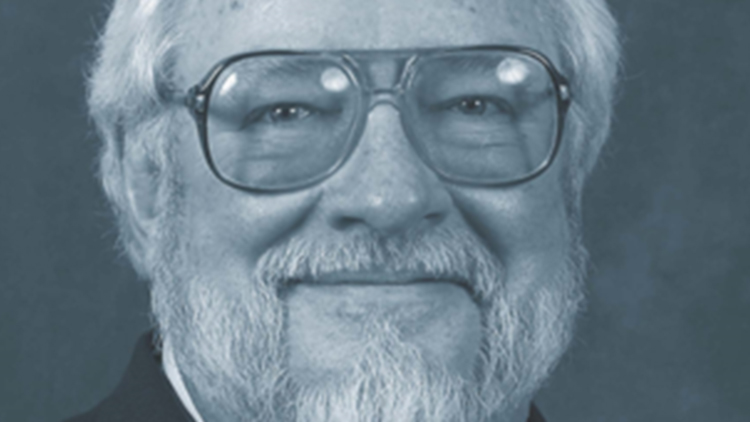Introduction 🧠
The Eisenhardt Method is a way of doing research that helps build new theories by studying multiple real-world cases. Kathleen Eisenhardt, a professor at Stanford University, developed this method to create strong theories based on observations and data rather than just logical assumptions or predictions.
In simple terms, this method is about studying different cases in detail, identifying common patterns, and using those patterns to explain how things work. This guide breaks down how the Eisenhardt Method works in an easy-to-understand way.
The Core Idea of the Eisenhardt Method 🎯
The Eisenhardt Method is designed for theory building. This means it is not just about collecting data but about discovering why things happen the way they do.
The key features of the method include:
- ❓ Asking Research Questions with Unclear Answers: The method focuses on topics where prior research is either conflicting or insufficient, providing fertile ground for new theories. These questions often aim to explore unknown areas, fill gaps in existing knowledge, or clarify contradictions in past studies.
- 🏗️ Selecting Multiple Cases Strategically: Instead of random sampling, cases are chosen carefully to highlight variations, similarities, and key elements of the phenomenon under study. This selection process ensures that findings are meaningful and applicable to real-world contexts.
- 🔍 Identifying Common Patterns Across Cases: Researchers compare cases to uncover trends, relationships, and consistencies that help shape a strong theoretical foundation. By analyzing multiple examples, they can distinguish core principles from unique case-specific details.
- 🧩 Using Logical Reasoning to Explain Relationships: Beyond simply observing patterns, the method emphasizes developing sound theoretical explanations for why these relationships exist. This step involves connecting empirical findings with broader theoretical frameworks to create well-grounded insights.
- 📊 Ensuring Strong Data Support: Findings are backed by robust, diverse data sources, such as interviews, reports, and observations, ensuring credibility and accuracy. Using multiple sources helps to cross-verify information and reduce potential biases in interpretation.
Step-by-Step Process of the Eisenhardt Method
1. Choosing the Right Research Question ❓
The first step in the Eisenhardt Method is selecting a research question that has not been fully answered before. This ensures that the study contributes fresh insights to the field. Ideal research questions typically focus on underexplored areas or seek to resolve inconsistencies in existing knowledge.
A well-chosen research question should:
- 📌 Address a real-world problem or gap in existing research.
- 💡 Encourage deep investigation and rich data collection.
- 🎯 Be broad enough to identify patterns but focused enough to allow meaningful conclusions.
For example, suitable research questions might include:
- 🚀 How do startup companies develop successful business models, and what factors contribute to their scalability?
- ⏳ How do organizations navigate uncertainty and make effective strategic decisions under time constraints?
- 🔄 What strategies enable businesses to successfully adapt to rapid technological advancements and shifting market demands?
These types of questions guide researchers toward discovering new patterns, behaviors, and processes, making them ideal for theory building using the Eisenhardt Method.
2. Selecting Cases Carefully 🏗️
Unlike traditional research that randomly picks samples, the Eisenhardt Method intentionally selects cases where the phenomenon of interest is most visible. This approach ensures that the study captures meaningful insights that contribute to theory development. The selection process involves several key considerations:
- ✅ Picking Cases That Clearly Illustrate the Phenomenon: Cases should provide rich, detailed data that allow for in-depth analysis of the process under study.
- ⚖️ Balancing Similarities and Differences: The method involves selecting cases that share some common traits while also varying in meaningful ways. This contrast helps identify which factors truly drive the observed outcomes.
- 🎭 Ensuring a Diverse Set of Examples: A mix of cases enhances the robustness of the theory by showing how different contexts influence the studied phenomenon.
Types of Cases to Select
For example, if a researcher wants to study successful startup companies, they might select cases like:
- 💰 A startup that became a billion-dollar company: To understand how extreme success is achieved, including the role of market timing, leadership, investor support, and scalability strategies.
- 📉 A startup that grew quickly but later failed: To explore what factors contribute to early success but eventual downfall, such as flawed business models, poor financial management, competitive pressures, or strategic missteps.
- 🏗️ A startup that took a slow and steady approach to success: To contrast different growth trajectories and long-term sustainability, analyzing how disciplined execution, gradual scaling, and risk management contribute to longevity.
- 🔄 A startup that pivoted successfully: To examine how businesses adapt to changing market conditions, identifying key pivot triggers, execution strategies, and the impact on long-term viability.
- ⚖️ A startup that remained niche but profitable: To understand how companies sustain themselves in smaller markets through focused differentiation, loyal customer bases, and lean operational models.
By systematically comparing these cases, researchers can uncover the critical elements that determine startup success, allowing them to build a more generalizable theory that applies across various business contexts. This multi-faceted approach ensures that insights are comprehensive and applicable to a wide range of entrepreneurial challenges.
3. Collecting Data from Multiple Sources 📊
A key feature of the Eisenhardt Method is collecting a variety of data to ensure accuracy and depth in research findings. This multi-method approach provides a well-rounded perspective and strengthens the reliability of the emerging theory. Data collection can include:
- 🗣️ Interviews with employees, customers, and leaders to gain firsthand insights and perspectives.
- 📜 Company reports and historical records to track past trends, strategic decisions, and financial performance.
- 👀 Observations of how people work, interact, and make decisions in real time, capturing nuances that may not be revealed in interviews.
- 📋 Surveys or questionnaires to collect structured data from a larger group, allowing for statistical analysis and validation.
- 🖥️ Digital and online data such as social media analytics, online reviews, and company websites, which provide additional layers of qualitative and quantitative information.
- 📊 Experimental or simulated data where controlled settings help test theories in a replicable manner.
Using multiple data sources not only helps reduce bias but also ensures that findings are well-supported and applicable across different contexts. The combination of qualitative and quantitative data enriches the understanding of complex organizational dynamics, making the research more robust and insightful.
4. Analyzing the Cases and Finding Patterns 🔍
Once the data is collected, the next step is analyzing it to find common patterns. This step involves organizing, comparing, and interpreting data to extract meaningful insights. Researchers follow these key approaches:
- 🏷️ Examining Each Case in Detail: Understanding the unique aspects of each case before drawing comparisons.
- ⚖️ Comparing Across Cases: Identifying similarities and differences to uncover patterns.
- 📊 Recognizing Key Themes and Repetitive Behaviors: Looking for recurring trends and processes that provide insights into the phenomenon under study.
- 📌 Validating Findings: Checking for consistency and cross-referencing with different data sources to ensure reliability.
- 📉 Visualizing Data: Using charts, tables, and frameworks to structure and simplify the analysis.
Example: Studying Quick Decision-Making in Companies
If a researcher is analyzing how companies make quick decisions, they might find that successful organizations:
- 🎯 Possess Strong Leadership: Encouraging fast, confident decision-making.
- 📜 Implement Clear Rules and Guidelines: Reducing uncertainty and ensuring smooth operations.
- 🔓 Empower Employees: Trusting team members to take initiative without excessive bureaucratic delays.
- 🚀 Leverage Technology: Using data analytics and AI to streamline decision-making processes.
- 🔄 Maintain Flexibility: Adapting strategies based on real-time market conditions.
By systematically analyzing these patterns, researchers can construct a strong theoretical foundation that explains what factors contribute to effective decision-making in organizations.
5. Building a Theory Based on Findings 🏗️
After identifying patterns, the next step is to construct a theory that explains them systematically. This involves formulating a structured explanation that integrates the observed relationships and provides insights into why they occur. A well-developed theory includes:
- 🔑 Key Concepts: Identifying the fundamental elements (such as leadership style, decision speed, or teamwork) that play a role in the observed phenomenon. These concepts serve as the building blocks of the theory and help define the scope of the research. Additionally, understanding the foundational constructs enables researchers to build on prior studies and contribute to existing literature.
- 🔗 Relationships Between Concepts: Defining how these elements interact and influence one another. This step involves mapping out dependencies and causal links to provide a coherent framework. Researchers should establish whether relationships are direct, indirect, or influenced by mediating variables.
- 📖 Logical Explanations: Establishing a theoretical framework that justifies these relationships, ensuring coherence and explanatory power. The explanations should align with existing literature while highlighting new insights. Strong theoretical reasoning connects observed patterns with broader frameworks, allowing for a comprehensive understanding of the studied phenomenon.
- 📊 Testable Predictions: Developing hypotheses that can be examined in future research to validate or refine the theory. This allows for empirical testing and further refinement through additional studies. Testable predictions should be measurable, falsifiable, and capable of being validated through various methodologies.
- 🔍 Boundary Conditions: Defining the limits within which the theory applies, ensuring clarity on when and where the findings are relevant. Acknowledging contextual limitations helps determine the generalizability of the theory and informs practitioners of its applicability in different scenarios.
- 📚 Theoretical Contributions: Highlighting how the new theory advances existing knowledge and fills gaps in prior research. The contribution should be explicitly stated, demonstrating how the theory refines, extends, or challenges existing perspectives.
By carefully constructing a theory that integrates these components, researchers can create a robust framework that enhances the understanding of complex phenomena and provides a solid foundation for future empirical validation.
Example: Applying Theory to Business Decision-Making
A potential theory might suggest: “Companies that encourage decentralized decision-making tend to make faster and more effective choices in uncertain environments due to increased flexibility, employee autonomy, and reduced bureaucratic delays. Additionally, organizations that integrate real-time data analytics into decision-making processes can further enhance their responsiveness to market changes.”
By framing findings within a structured theoretical model, researchers can contribute to the broader academic and practical understanding of complex systems. Future studies can then assess these theories under varying conditions to determine their applicability across different contexts and industries. Expanding the theoretical model to include emerging factors, such as artificial intelligence or remote work dynamics, can provide even greater insights into evolving business strategies.
6. Ensuring Accuracy and Addressing Alternative Explanations ✅
To make sure the theory is solid, researchers must:
- 🔄 Cross-Validate Findings Across Different Cases: Comparing cases ensures that observed patterns are not unique to a single context but are generalizable across various conditions.
- 🧐 Examine Alternative Explanations and Confounding Variables: Researchers should critically analyze whether external factors might be influencing the observed relationships. This includes considering industry-specific elements, cultural influences, or situational variables.
- 📌 Clearly Define the Scope and Boundary Conditions: Every theory has limits. Researchers must specify where the theory applies, such as identifying whether findings are more relevant in particular industries, organizational structures, or socio-economic contexts.
- 📊 Use Multiple Data Sources to Strengthen Validity: Triangulating different forms of data (qualitative interviews, quantitative surveys, archival records) can provide a more comprehensive understanding and reduce bias.
- 🔍 Iterate and Refine the Theory Based on New Evidence: If discrepancies or unexpected findings emerge, researchers should revisit their data collection, refine their framework, and adjust theoretical assumptions where necessary.
By systematically verifying findings and addressing alternative explanations, researchers can develop a robust and credible theory that holds up to scrutiny and contributes meaningfully to the field.
hat the Eisenhardt Method is NOT 🚫
There are many misunderstandings about the Eisenhardt Method. Here are a few things it is not about:
❌ It is NOT about large sample sizes.
- Instead of studying hundreds of cases, it focuses on 4-10 carefully selected cases.
❌ It is NOT limited to qualitative data.
- While it often uses interviews and observations, it can also include numbers, statistics, and other types of data.
❌ It is NOT about proving a theory.
- The goal is to build a new theory, not test an existing one.
❌ It is NOT just for business studies.
- It can be used in healthcare, education, technology, and many other fields.
Why the Eisenhardt Method Matters 🌟
The Eisenhardt Method has been widely used and has influenced many fields because it: ✅ Helps develop new theories in areas where little research exists ✅ Provides deep insights into real-world situations ✅ Balances structured research with flexibility ✅ Encourages combining different types of data for accuracy
Many groundbreaking studies have used this method to understand business strategies, decision-making, and organizational behavior.
Conclusion 🎓
The Eisenhardt Method is a powerful way to build new theories by studying multiple real-world cases. It involves careful case selection, detailed data collection, and pattern analysis to uncover insights that help explain important phenomena. By following this structured yet flexible approach, researchers can develop theories that are both accurate and practical.
By making research more understandable and accessible, this method bridges the gap between theory and real-world application, helping businesses, policymakers, and individuals make better decisions.










Leave a Reply